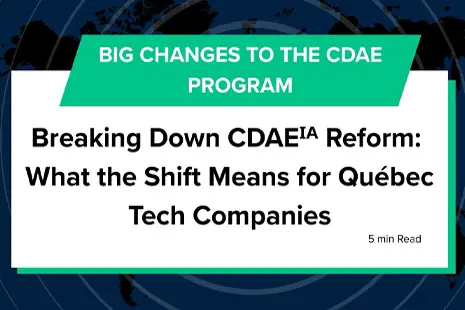This past spring, the Supreme Court of Canada made a ruling that, despite flying under the radar for many at the time, could have serious implications for R&D-focused organizations as they prepare their end-of-year tax claims.
The TL:DR: The ruling finds that research and development funded through below-market-rate government loans are disqualified from additional SR&ED financing, as those loans now qualify as “government assistance” through the Court’s definition.
Of course, the ruling casts a broad shadow, and marks a big change in course for how government funding programs—which range from loans to grants to tax credits like SR&ED— can support homegrown innovation.
To that end, how it will actually play out in practice remains to be seen—especially as the Court’s language departs from the Canadian Revenue Service’s (CRA’s) interpretation on government-backed loans.
We’ll break down the details of the case and how Boast recommends navigating this new legal terrain as calendar years come to a close.
The nitty gritty
Specifically, the Court rejected an appeal by aviation and defense provider CAE Inc. to overturn a previous ruling that deemed more than $250 million in expenditures incurred over the course of an R&D-intensive project (flight simulation systems) ineligible for SR&ED incentives. That’s because $250 million in R&D funding came through a low-interest, government-backed loan.
The loan in question was from the Industry Canada’s Strategic Aerospace and Defence Initiative that would pay out over five years with a 2.5 percent interest rate.
In the court’s ruling, because the loan was only about one third of the market rate when disbursed (2014), the court characterized the infusion as “government assistance.” As such, $250 million of the more than $700 million in R&D expenditures that CAE racked up over the length of the project couldn’t “double dip,” so to speak, in receiving government support.
That means that despite likely plans to capitalize on SR&ED—which disperses more than $3 billion in tax incentives to 16,000 innovative businesses each year—CAE would need to absorb those costs, paying many millions of dollars in R&D expenses that they hadn’t previously budgeted for.
Redefining “government assistance”
This recharacterization of “government assistance” is what’s at the heart of the ruling, as the traditional understanding hinges on grants or non-refundable programs that don’t call for repayment.
It still remains to be seen how the CRA will ultimately interpret the ruling, however, which is understandably frustrating for many startups given the constellation of government-backed loans Canadian businesses rely on today.
It’s not uncommon for companies to stack their funding mechanisms to maximize their runway as part of a healthy (and smart) capital strategy. While the SR&ED program has language built in that prevents blatant “double dipping” in government funding—especially where government grants are involved, or when the nature of R&D changes from technical to more consumer-facing, for instance—the repayable nature of government loans traditionally makes them a complementary funding vehicle to SR&ED.
Stay the course and partner with the pros
For the moment, the Department of Finance and the CRA haven’t provided any specific guidance related to this latest ruling. However, as Boast’s VP of Customer Delivery Matt Funk explains, the guiding language in current tax law remains unchanged as it relates to government loans versus other kinds of assistance.
Per IT-273R2:
“The fact that a loan is interest-free or that the rate of interest on the loan is less than the existing commercial rate of interest will not normally cause a loan to be considered as assistance”
As such, we will continue to guide clients as we always have when it comes to funding R&D and capitalizing on SR&ED:
- Repayable loans will not be considered government assistance.
That said, we should warn our clients when we encounter low-interest/interest free loans:
- The CRA may consider the amount of the loan to be government assistance which will reduce the eligible SR&ED expenditures
- If this does happen in an audit, then the ITCs can be claimed in the year that the repayment is made.
Navigating SR&ED and the many innovation funding programss available across Canada can be tricky given the wealth of programs offered at both the federal and provincial levels. To learn more about how you can access non-dilutive funding to fuel your runway, download our ultimate guide:

To learn more about how Boast leverages an AI-driven platform and years of expertise getting founders access to non-dilutive funding, talk to an expert today.


